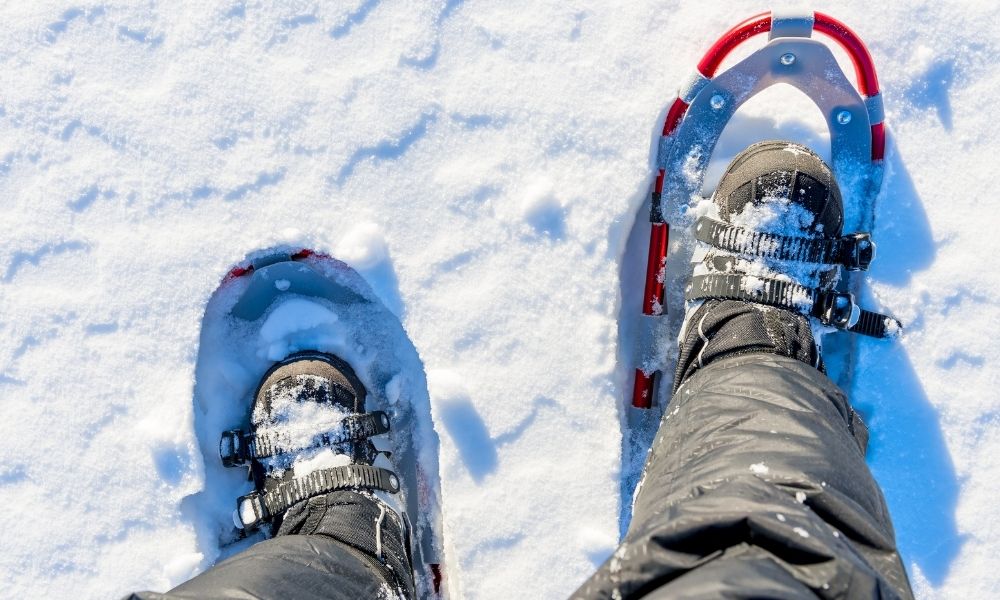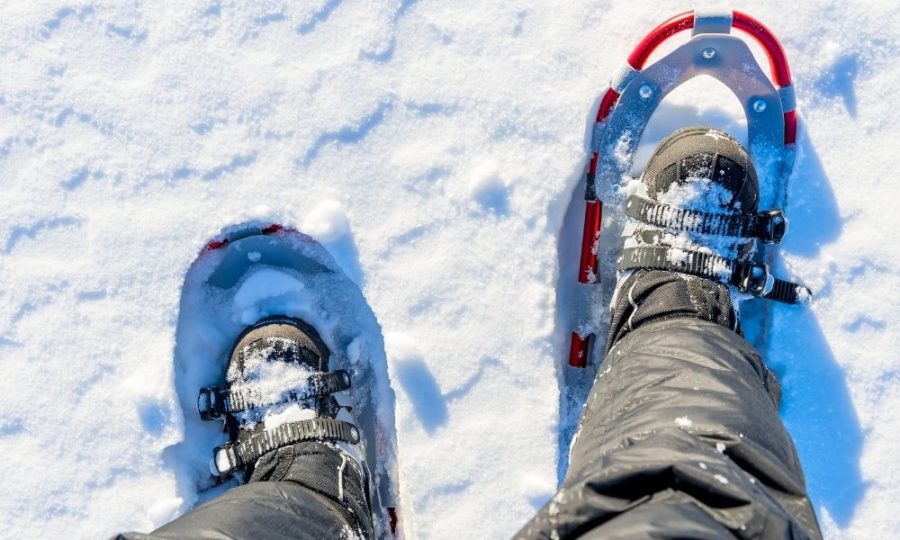
Winter is here, and the opportunities for fair-weather outdoor sports are down to nothing. Are you looking for a new wintry sport with great health benefits, minimal equipment, and the chance to get in touch with nature? Consider the benefits of getting started with snowshoeing. It’s hiking with the extra challenge of cold weather, ice, and snow, but you’ll also experience the awesome, bracing beauty the great outdoors only has during winter. With these tips, it won’t be long before you’re strapped into a pair of snowshoes and crunching through the snowy tundra!
Get Equipped
You don’t need a lot of gadgetry for snowshoeing. Naturally, snowshoes are a must. Find a pair suitable for your height and weight. The heavier you are, the bigger and longer the shoes will need to be to displace snow and keep you from sinking. Consider renting—they’ll measure and fit you for a fine pair of shoes, and you’ll know what to look for when you buy. Other equipment is necessary mostly for your comfort and safety. Wear thermal underwear, and dress in a water-resistant coat and snow pants. Cut down on glare and protect your eyes with snow goggle sunglasses. Also, be sure to wear high boots and thermal socks that keep snow out and away from your skin.
Pack Smart and Light
When you’re a beginner, most hikes just need the basics. Use a lightweight backpack to carry a bottle or canteen of water; snacks like dried fruit, nuts, granola bars, beef jerky, and trail mix; a small first aid kit; fire-making materials; and a headlamp in case it gets dark. Naturally, overnight jaunts require a tent, sleeping bag, and other materials necessary for roughing it—but if you’re just starting out, keep it simple!
Take It Easy
If you’re just getting started with snowshoeing, don’t think you have to prove yourself by tackling a mountain range or the Appalachian Trail in January! Start slow and easy. Look for local trails that promise flat ground and well-walked tracks so that you can find your footing, so to speak. Places that rent snowshoes provide proximity to plenty of pre-walked paths that can give you a taste of the sport without taxing your body and skills too much. The more you do it, however, the better you’ll feel, and the rougher the terrain you can tackle in the future. If you’re visiting somewhere with freshly fallen and heavy snow, go with a buddy so that you can take turns as the leader, pressing down the snow for those behind you.
Know Where You Go
For your first few walks, go somewhere safe. If a natural area is good hiking or walking, chances are it is good for snowshoeing. If you don’t know what you’ll find there, study trail maps beforehand and read up on any hazards in the area. Bring along a map. Navigational devices and apps are nice, but you never know when you’ll end up in an area with no service. Avoid rivers, streams, and ponds, and consider any icy area a potential danger. Above all, let someone know where you’re going. Check out this list of trails in the Monadnock Region. If you are traveling to southwest New Hampshire for time-off to enjoy nature and visit the area, many area Inns and B&Bs have trails nearby. Happy trails!




